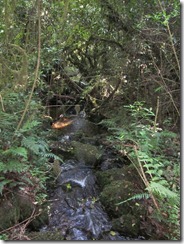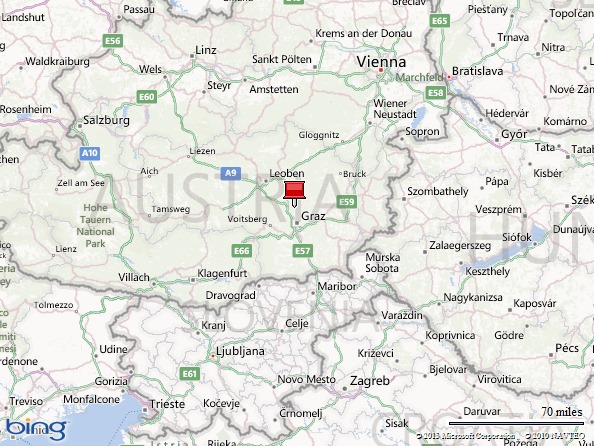Nestled 4,700 meters up the flanks of Kilimanjaro, School Hut is a mountain training facility for park rangers. The camp is tantalizingly close to the rim of Kibo Peak, an extinct volcano. The summit beckoned to me like a siren song and made me forget what we had already endured. Remorse gnawed at me. I regretted this seemingly pointless hike and still chagrined that we weren’t going all the way to the summit today. It was there, right within my grasp! Delusion hoodwinked me into thinking that I could have made it to the top. It was as if I had been seduced by a coveted prize dangling before my eyes. It finally occurred to me that perhaps I was overestimating my own ability and underestimating the road ahead. At last my senses came back to reality. If the trek to School Hut had been this difficult, there was no way I would make it to the top with what little strength I had left.
Kay and I slumped against a large boulder. We swapped energy bars and snacks filled with sugar jolts. Our guide, Minja, waited for us nearby. He rarely interacted with us and preferred to stay watchful but aloof. We chatted with a German couple that had stopped here for the night before making their final ascent. We lamented that we were staying much further down the mountain than they. It didn’t make sense. Staying at School Hut made more sense than camping at Camp 30 Caves. It’s much closer to the summit and a short hike to Kibo Hut, the summit base camp every climber must pass en route to the top. Our lead guide, August, told us that the Tanzanian government prohibited camping at School Hut, which was an obviously incorrect statement given that another group was setting up camp right in front of us. Park management apparently limited overnight camping at School Hut and reserved it for elite tour groups that charged a lot of money to climb Kilimanjaro. Although this would have been an ideal stopping point, I was unwilling to pay thousands of dollars more to camp there.
As I rested I looked out over the alien terrain. Large boulders and loose rock littered the horizon. The dust kicked up by a brisk wind whipped us from all sides and coated our clothing and lungs. We could see, taste, touch and smell the earth. The barren wasteland reminded me that we were touching the sky and yet were closer to Earth than ever before. Low visibility and the imposing mountain face obscured the heavens that once stretched above us for eons. I was like an insignificant insect clinging to the edge of a massive mound.
Kay and I rested at School Hut for about 20 minutes before pressing on. I had to coax my muscles to move again. Resting seemed to do more harm than good and reminded me of how tired and sore I was; there’s something to be said about moving on and not letting the pain register. We hiked 45 minutes downhill at an easier pace until we reached another trail. Minja tried to lead us uphill in the direction of Kibo Hut, but Kay and I rebelled. Vigorous hands signals made it perfectly clear to him that we weren’t about to follow him no matter what August had instructed. Rest and recuperation were our priorities, and we were determined to get back to Camp 30 Caves without any unnecessary detours. Minja finally gave in and skulked behind.
We put Kibo Hut at our backs at about 1 p.m. and headed downhill again. The journey was less strenuous than before but left me slipping and sliding precariously. Gaiters on my shins protected my legs from the onslaught of loose gravel and rock. My Keen-brand hiking boots, which until now had been excellent companions, didn’t fare so well. Several times I slipped and did comical pirouettes with my hiking poles to avoid falling unceremoniously on my keister. Unfortunately, my hips and knees acted as shock absorbers and took the full force of my shifting weight. My muscles and joints groaned, and the pain grew acute. With each slide I cursed the ground and resolved to give August an earful for sending us on this unnecessary hike.
Kay and I made it back to camp at mid-day. Kay was also frustrated by the day’s events but held up much better physically than I. As I limped into the encampment I yelled angrily, “Where’s August?”
“He’s on the mountain,” one porter told me. Angry, I stormed off to my tent, casting my poles aside in disgust. It took me hours to cool down and relax to the point that I was able to move about again. Our companions, Betty and Tom, and August staggered into camp just before dark – almost eight hours after they had left! Tom later told me that they had done the entire route, including Kibo Hut, but had spent so much time there that they barely returned before dark. They too were utterly exhausted from the ordeal and agreed that today’s hike was fruitless.
Reunited, the four of us commiserated over dinner and expressed our mutual displeasure at August. We decided to talk to him as a group and tell him our dissatisfaction with the day’s hike and other mistakes that had been made on this trip. While August was caring man who did his utmost for us, he was very disorganized and clearly had not thought through some of his plans. For example, August seemed worried about altitude sickness to a fault. He did not take into account whether today’s climb would affect our group in other ways. In fact, it figuratively killed all of us. Betty was in the worst shape of all. We were concerned that she wouldn’t make it to the summit, a major setback for a woman who had previously tried and failed to summit Kilimanjaro years before. We were all rooting for her to make it this time. Kay and Tom fared better physically but could have done without the visit to School Hut. As for me, I thought that the hike had wasted too much of my strength and left my hips and knees badly weakened and bruised. The high altitude also left my respiratory condition worsened. I began coughing more. I was definitely not in the physical shape I had wanted to be in before my final ascent. Altitude sickness I can handle. Not making it to the top because of today’s hike was unacceptable.
Tom, Kay and I talked to August after dinner and suggested some ways to improve. (Betty went to bed exhausted.) We told him that the guides needed to speak English. We shuddered to think what would have happened if one of us had been injured along the way. How would Minja communicate his rescue plan to us — let alone rescue us — with such meager English? We suggested that August change the route to avoid such a difficult acclimatization hike. We offered other tips to improve communication to ensure that we would have a more pleasant and safer hike. In hindsight I was glad August was gone when I had arrived at camp; it was more productive for cooler heads to prevail and talk to him civilly as a group.
In spite of today’s difficulties, there were some positive developments today. Camp 30 Caves offered us much needed sanctuary from the elements. In the evening when the clouds parted, the mountain appeared in full view and offered us a spectacular show as the sun set. The peak has become a beautiful focal point to ease my mind of life’s challenges, stresses, or discomforts. In spite of such an arduous day, the night finally brought peace. I slept very, very well.
Lesson learned: Question your guide’s advice if something seems amiss. Guides tend to apply a one size fits all formula that may not be optimal for you. For example, acclimatizing may be good for those prone to altitude sickness. It may not be so good for someone with no such symptoms who might be better off resting weary bones.




